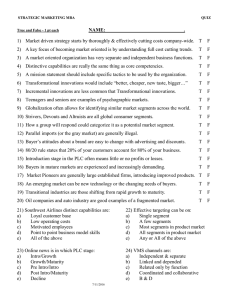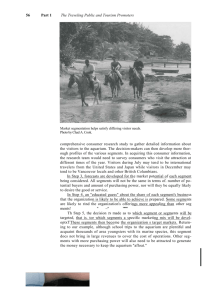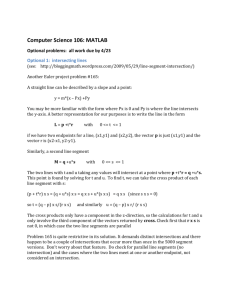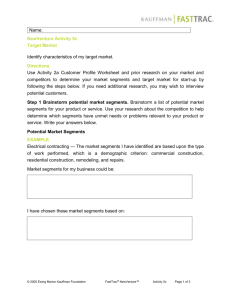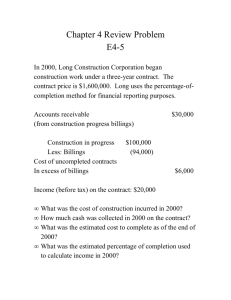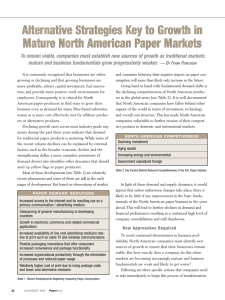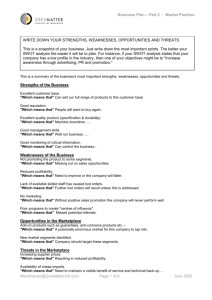Lecture 11 Product Development I
advertisement
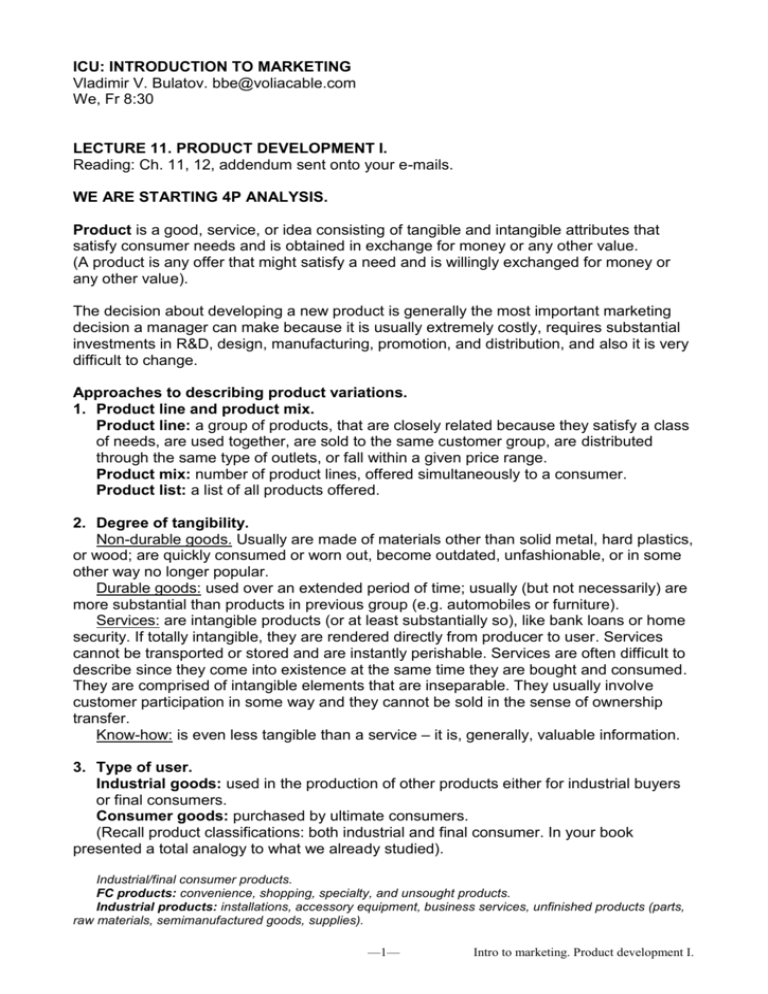
ICU: INTRODUCTION TO MARKETING Vladimir V. Bulatov. bbe@voliacable.com We, Fr 8:30 LECTURE 11. PRODUCT DEVELOPMENT I. Reading: Ch. 11, 12, addendum sent onto your e-mails. WE ARE STARTING 4P ANALYSIS. Product is a good, service, or idea consisting of tangible and intangible attributes that satisfy consumer needs and is obtained in exchange for money or any other value. (A product is any offer that might satisfy a need and is willingly exchanged for money or any other value). The decision about developing a new product is generally the most important marketing decision a manager can make because it is usually extremely costly, requires substantial investments in R&D, design, manufacturing, promotion, and distribution, and also it is very difficult to change. Approaches to describing product variations. 1. Product line and product mix. Product line: a group of products, that are closely related because they satisfy a class of needs, are used together, are sold to the same customer group, are distributed through the same type of outlets, or fall within a given price range. Product mix: number of product lines, offered simultaneously to a consumer. Product list: a list of all products offered. 2. Degree of tangibility. Non-durable goods. Usually are made of materials other than solid metal, hard plastics, or wood; are quickly consumed or worn out, become outdated, unfashionable, or in some other way no longer popular. Durable goods: used over an extended period of time; usually (but not necessarily) are more substantial than products in previous group (e.g. automobiles or furniture). Services: are intangible products (or at least substantially so), like bank loans or home security. If totally intangible, they are rendered directly from producer to user. Services cannot be transported or stored and are instantly perishable. Services are often difficult to describe since they come into existence at the same time they are bought and consumed. They are comprised of intangible elements that are inseparable. They usually involve customer participation in some way and they cannot be sold in the sense of ownership transfer. Know-how: is even less tangible than a service – it is, generally, valuable information. 3. Type of user. Industrial goods: used in the production of other products either for industrial buyers or final consumers. Consumer goods: purchased by ultimate consumers. (Recall product classifications: both industrial and final consumer. In your book presented a total analogy to what we already studied). Industrial/final consumer products. FC products: convenience, shopping, specialty, and unsought products. Industrial products: installations, accessory equipment, business services, unfinished products (parts, raw materials, semimanufactured goods, supplies). —1— Intro to marketing. Product development I. (Final) consumer goods: 1. Every day consumption goods. - basic goods (purchased regularly) (tobacco, soap, newspapers). - impulse purchase goods (chewing gum, “maggi” soup) - emergency/extraordinary goods (iodine, drugs, glue, etc.) 2. Goods of preliminary evaluation (usual expensive goods, like furniture). 3. Exclusive goods (e.g. Jaguar auto). 4. Goods of passive demand (encyclopedias, tomb stones). Industrial goods: 1. Raw materials and details (which are fully used in manufacturing the ultimate product). 2. Capital estate (includes real estate and subsidiary equipment). 3. Subsidiary materials. 4. Business services. Variety of products exists due to market heterogeneity. That is, different segments agree to pay different prices for a product that has a certain level of attributes (that is, a certain level of consumer’s value). If priced at pt, than all segments with reservation prices lower than pt (reservation price of a segment t) will not purchase the product. On the other hand the manufacturer will loose some profit since still, there could be segments, which would agree to pay more than pt. The way out here is to analyze the sizes of segments, and to offer to them different product versions with different attribute levels, at different prices, so that no cannibalization occurs (that is, segment t+1 will have no desire to purchase a product, designed for segment t). Additionally, costs also must be evaluated; after cost evaluation, it may turn out that some segments appear to be unprofitable, so no product development is to be done for them. Competition, which is also involved in the process of proper product development, can be assessed as passive (when our marketer is simply to consider the opportunities from competitors, when dealing with our products), and dynamic (strategic), when competitor’s reaction is also to be evaluated. Newness of a product: I. From company’s perspective: a. line extension (incremental improvement of existing products); b. significant jump (incremental improvement of technology used); c. revolutionary new product (fundamental improvement of technology used; e.g. introduction of digital equipment instead of analogous). II. From consumer’s perspective: a. continuous innovation: when no new behaviors must be learned when starting to use the new product; b. dynamically continuous innovation: when introduced improvements require minor changes in behavior to use the new product (special seats for very small children in cars); c. discontinuous innovation: forces a consumer to learn entirely new consumption pattern (e.g. a jet stream oven). WHY PRODUCTS FAIL 1. Too little market attractiveness (e.g. Kodak’s Ultralife lithium battery with 10 years shelf life was available only in 9 volt configuration – what is less then 10% of US market). 2. Incomplete product and market definition before the start of a product development (e.g. Prodigy sales network). 3. Insignificant point of difference (when consumer feels/perceives no difference b/w existing versions of a product and the newly introduced ones). —2— Intro to marketing. Product development I. 4. 5. 6. 7. Poor product quality (R.J. Reynolds smokeless cigarettes… “they are terrible…”). No market access. (No possibility to communicate or get a shelf space). Bad timing (e.g. when tastes change radically). Poor execution of marketing mix. NEW PRODUCT DEVELOPMENT PROCESS (7 STAGES). 1. New product strategy development a. Objectives (describe the markets for which the potential product might be developed and the role of new products in the overall corporate strategy). b. Proactive vs. reactive strategy development. Proactive – leads to systematic allocation of resources to identify and seize opportunities (future oriented approaches). (Sony is a pure future-oriented innovator). Reactive – involves defensive approaches by responding to a competitor’s actions. (Many Chinese and Singaporean companies). 2. Idea generation. a. Customer suggestions. b. Employee suggestions (e.g. Texas Instruments’ family of speak&[...] devices for kids). c. Research and Development Breakthroughs (firm’s basic research; costs may be huge). Idea generation methods. 1. Synectics (by William Gordon, 1944) – mixing incompatible elements, which may lead to spontaneous brain activity. 2. Morphological (Zwicky, Fritz) – emphasizing the most important parts of a test system to generate perfect solutions (usually done for low-level research elements, such as packaging, etc.). 3. Delphi method (by Rend Corporation) – evaluation of expert propositions, taking into consideration all proposed solutions. 4. “Brainstorming” – 5 experts think for 10 minutes and generate up to 250 new ideas. Some of them might be very valuable. d. Competing products. 3. Screening and Evaluation. a. Internal – evaluation of technical feasibility of a proposition. b. External – concept test with customers. 4. Business analysis. (Synergetic analysis). How new introduction will affect already existing work pace of a company. (Includes investment projections, legal aspects, contradictions with existing products, revenue projections, etc.). It is the last stage until significant spending occurs. 5. Development stage and prototype testing. 6. Market testing. (Exposing new product to prospective buyers in realistic purchase conditions to see if they will buy it). At this stage not only sales are examined, but also advertising level, seller’s loyalty to the product, distribution system, etc. are analyzed. Can be done either in real circumstances or in simulated environment. —3— Intro to marketing. Product development I. 7. Commercialization. Positioning the product and launching full-scale production and sales. <Look at Figure 11-9, which demonstrates types of marketing information and methods, used at implementing different stages of new product development>. Product Life Cycle: a concept, that describes the stages a new product goes through on a marketplace: development, introduction, growth, maturity, and decline. Look at Figure 12-1. <Very important>. —4— Intro to marketing. Product development I.

